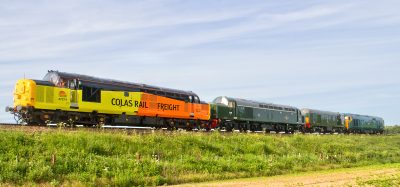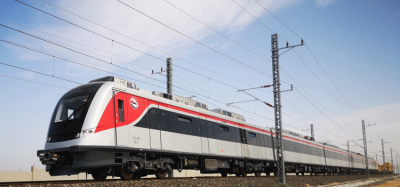The importance of rolling stock for SJ’s future competitiveness
Posted: 20 July 2014 | Crister Fritzson | No comments yet
SJ review’s their strategies and strategic objectives about once every three years. In this respect, the Group’s plan also encompasses the traffic and rolling stock programme, which extends over a period of five years. Examples of the issues addressed include business intelligence and, not least, future competition in the market, customer insights, market analysis, travel trends, regulatory developments, production, rolling stock, product structure, price and channel strategy, brand platform as well as the company’s vision and business mission. Crister Fritzson is Chief Executive Officer at SJ, and he takes the time to explain further with particular emphasis on the importance of rolling stock.
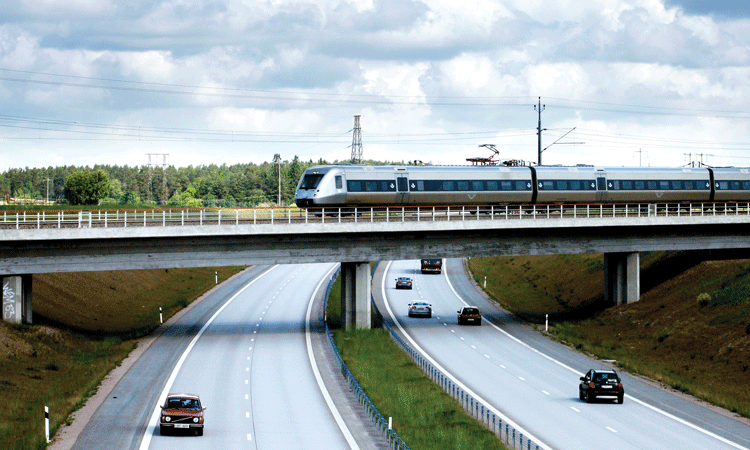

Credit: Stefan Nilsson / SJ
SJ aims to be a long-term, sustainable rail operator in Sweden. SJ will be a market leader and we will do our utmost to be our customers’ preferred choice. We will retain and cultivate our existing customer base. SJ’s success is based on a customer-first philosophy, a focus on core operations and the creation of lasting profitability on all lines we service. We believe that the foreseeable future will be characterised by intensified competition, a greater emphasis on sustainability and a major focus on cost efficiency.
On routes where we are facing competition from other train operators, we have noted an increase in terms of the offering, rail travel, price competition and interest in rail services. This, combined with growing concern for environmental issues among the general public, will strengthen rail travel in relation to other modes of transport. SJ will thus operate in a larger, expanding market. SJ’s restart of commercial train services on the Gothenburg–Malmö line will also generate market growth. A general underlying growth trend driven by population growth and economic factors is also anticipated to increase travel somewhat in other markets. SJ’s key sustainability issue is its continued efforts in the area of punctuality. The better our punctuality rate, the better the chance people will choose the train ahead of air travel or the car.
The rapid growth aforementioned for domestic aviation, driven by an expanded offering and price pressure, has once again gained momentum in 2014 having stabilised during 2013. SJ’s existing competitors are also continuing to invest. Several airlines are investing in new, modern aircraft fleets, while others are tightening their alliances to create swift and smooth airport transfers. Private car traffic has shown a weak to moderate but stable growth trend over a number of years, while the market share commanded by express buses has remained relatively constant in recent years.
To meet competition from other operators and competing modes of transport, and to secure the future necessary investments in new rolling stock and our existing fleet, we must continue to maintain an intense focus on efficiency; a SEK 1,000 million reduction in costs will be required.
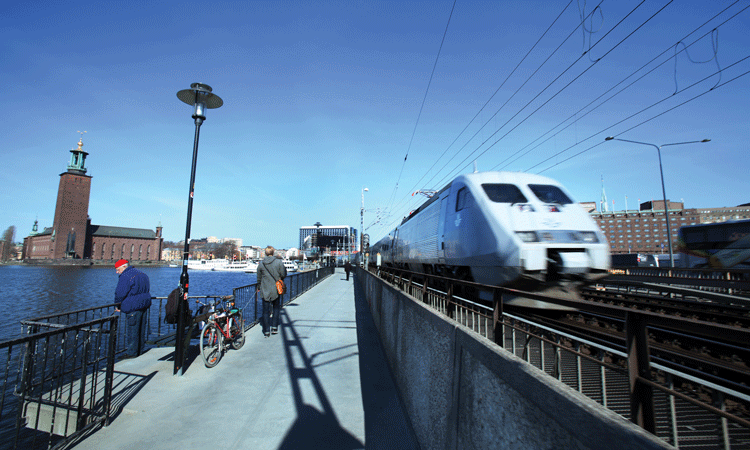

In total, all SJ 2000 trains have travelled 261 million kilometres. Credit: Stefan Nilsson / SJ
Optimistic outlook
We are also cautiously optimistic and deem the political development to be dynamic with a greater focus on rail travel. From being a relatively low-priority issue, the organisation of the railway and its infrastructure needs have climbed the political agenda. This is a consequence of several aspects: the problems that have plagued winter services, the long-term structural needs that have emerged due to the increase in local and regional commuting, and the status of commercial passenger services, which have occasionally reached their capacity ceiling. The rise in goods transport is also an underlying factor. I anticipate rail issues to remain high on the agenda in the years ahead. The Swedish Government has also launched an inquiry – ‘The Government Committee Reviewing the Organisation of the Railway Sector’ – which will present its findings in 2015.
The Swedish National Transport Plan, which was adopted earlier in the spring, already contained decisions on the construction of the first section of a main line for high-speed trains in the form of Ostlänken (‘the Eastern Link’; a 50km-long stretch between Järna and Linköping) and the construction of a new Gothenburg–Borås line. However, the remaining sections extending to Gothenburg via Jönköping are not contained in the 2014-2025 plan. Accordingly, all sections of these rail lines could be completed in 2038. It is only then that a new Stockholm–Gothenburg main line, via Östergötland, Jönköping and Borås, will become a reality.
The infrastructure requires continued investment in the railway, particularly as it is rail services that can ultimately solve the growing mass transport needs, not least in our high-growth regions of Öresund/Skåne, Västra Götaland and Stockholm/Mälardalen. The growth forecast for these regions points to an additional half a million inhabitants by 2020, with an increase of one million for Sweden as a whole by 2030.
In terms of SJ’s own operations, its rolling stock and its rolling stock plan are critical for ensuring future competitiveness. We have adapted our fleet to achieve simplicity and uniformity.
The fundamental requirements of the market are for reliable traffic conditions and efficient travel. The market also demands simplicity and comfort. Moreover, the customers’ perception of what constitutes value for money, for example, is something that affects the behaviour of the entire market.
Rolling stock
The rolling stock is designed to match the needs of the market and the prerequisites of Swedish infrastructure. A guiding principle of the long-term development is thus to strive towards reducing the variety of rolling stock. By increasing simplicity, we decrease the complexity, thereby reducing costs for planning, maintenance and training. We endeavour to achieve a cost-efficient production apparatus and increase productivity by standardising and industrialising our processes. A high base level in terms of quality in all customer-related aspects is also attained by minimising the variety of rolling stock on each line given our current fleet and available resources.
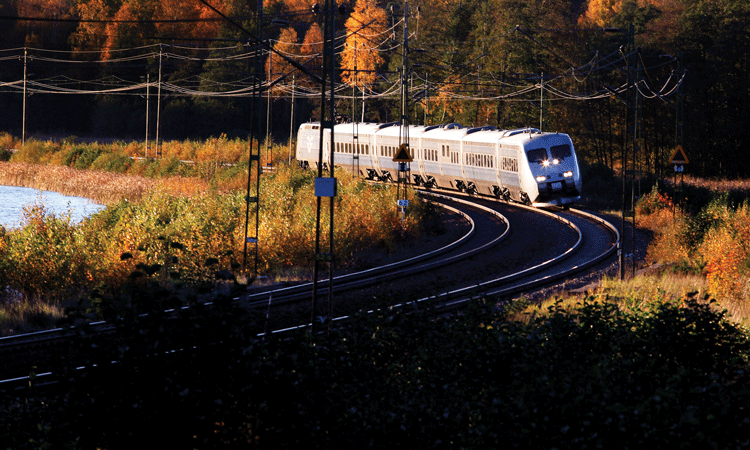

Special features of the SJ 2000 include its bogies and carriage tilting. Credit: Stefan Nilsson / SJ
Strengthening competitiveness
Another important factor in strengthening competitiveness is to optimise the capacity utilisation of rolling stock. This yields a lower unit cost and reduces the absolute capacity need. Everybody in the industry is aware that such potential exists across the production process and not just in train utilisation.
In the current year, we have taken several key decisions relating to the rolling stock representing SJ’s premium product. The principal components in the long-term plan are to extend the life of the SJ 2000 fleet, prepare for the phasing-out of the locomotive fleet and discontinue rolling stock of which there are only a small number or for which the areas of application are ambiguous. However, to meet customer and capacity requirements, it will be necessary to supplement the fleet with new regional trains as we approach 2020 and with new long-distance trains further in the future.
SJ’s investment in the SJ 2000 is the largest of its kind in several decades. The overall investment will amount to SEK 3.5 billion and entails a comprehensive renewal of SJ’s first fast train. The reasoning behind the decision to carry-out a total makeover of these trains instead of purchasing new units is that the X2 (which is the name of the train type) is one of the best trains built in its class. The train was developed by the Swedish company ASEA at the end of the 1980s and is the only train type in Sweden with a special basket tilting design, enabling it to travel at high-speed and with a considerable degree of comfort on the particularly curvy Swedish railways.
In the past, only a few of the train world’s premium models, such as the ICE in Germany and the TGV in France, were considered worthy of undergoing similar refits. A unique inspection of the trains also revealed that they are in good condition. In the initial phase, the computer, drive and control systems of the entire SJ 2000 fleet will be replaced. Technology has developed since the train was introduced at the beginning of the 1990s and will now be replaced to meet the demands of the 2020s. The inside of the train will also be revamped and fitted with a new interior.
The refurbishment programme will also feature a conscious sustainability and environmental strategy, with a great deal of material being reused instead of phasing-out and fitting new equipment. Among other benefits, we expect a reduction in the energy consumption of approximately 10% for the new SJ 2000s. The SJ 2000 will feature state-of-the-art technology and the interior will be brighter and more appealing. The train is adapted to meet the demands of modern business travellers in terms of comfort, offering the opportunity to work or rest on-board.
It is estimated that purchasing new trains that would offer the equivalent performance would be considerably more costly. In conjunction with the extension of its service life, the capacity of the SJ 2000 will be expanded by adding more passenger seats.
It will be some time before high-speed lines (>250kp/h) will become a reality in Sweden, and operating a high-speed train on conventional lines with mixed traffic is associated with a number of disadvantages. SJ will thus delay its decision regarding high-speed trains until such time as the infrastructure permits higher speeds with maintained or increased capacity.
SJ 2000 facts
- The maiden journey of the X 2000 (which the train was formerly called) took place on 4 September 1990 between Stockholm and Gothenburg.
- The first two train units put into service have each travelled more than 7 million kilometres to date. In total, all SJ 2000 trains have travelled 261 million kilometres.
- More or less all Swedes have travelled on an SJ 2000 at some point. Over the years, approximately half a billion journeys have been completed.
- The train’s normal technical top speed is 210km/h, but the highest permissible speed in operation is 200km/h. The record set during tests of the SJ 2000 is 276km/h.
- The special features of the SJ 2000 include its bogies and carriage tilting, which enable the train to travel faster and more smoothly in bends than other models of train.
- SJ carried out an update of the SJ 2000 in 2005-2007 which, in addition to a new design, involved fitting new, comfortable seat cushions, power outlets, Internet connectivity and redecorating the bistro. At present, a project is also under way to strengthen and improve on-board mobile telephony and Internet.





